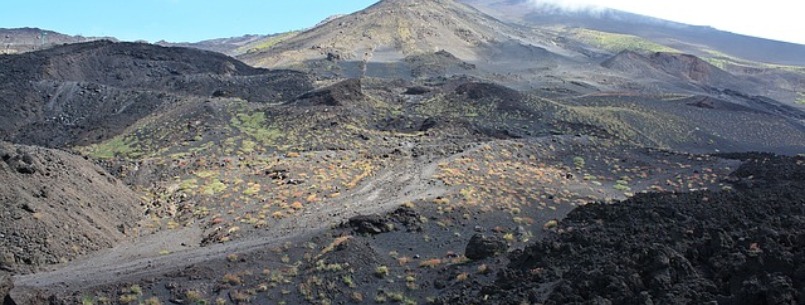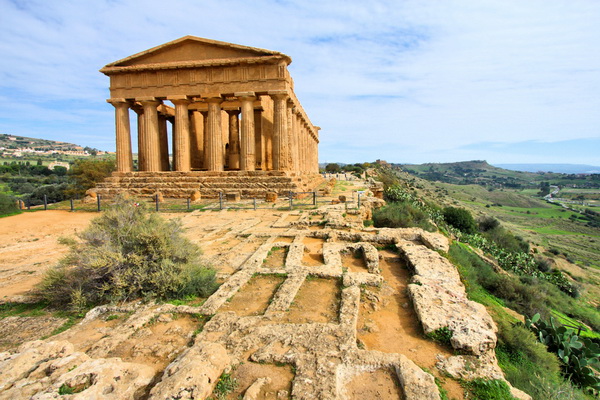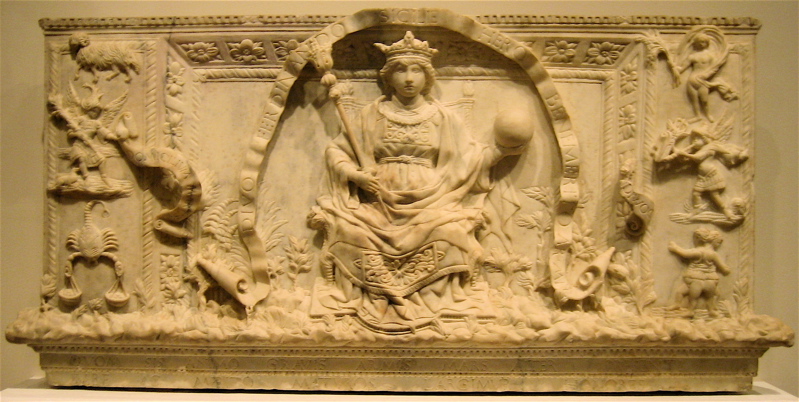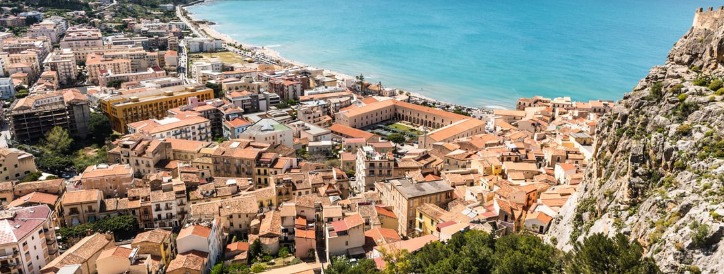Sicily Vacation Guide
Sicily is a fascinating land to visit. From Mount Etna with its rich forests and wildlife to the capital city of Palermo with its fine restaurants to the city of Syracuse with its Greek ruins, there is a great deal to see and do. Still, the tourism industry there lags behind that of its closest neighbor, Italy. For this reason, while it has more than enough to fill several scrapbooks, journeying there probably will require some patience.
In many ways, one might apply a very often used adage when talking about the Sicilian tourism industry – a “well-kept secret.” Another term might be “overlooked.” This can be said about Sicily in many different contexts and in many different eras. Sicily has been being overlooked since the times of the Roman Empire. Although just about every world power in that part of the world at one time or another has wrested control of the island from the previous rulers, it never has been thought of as a vital possession.
The biggest island in the Mediterranean and is located southwest of the country of Italy. The strait of Messina divides Sicily from mainland Italy and contains a very powerful sea current.
The landscape of Sicily is mostly hilly, though there are higher mountains along the Northern coast and the highest and major active volcano in Europe, Mount Etna. Etna is still active and you can see it at night as it spews. The majority of the people on the island live in the coastal areas. Sicily has an economy that includes producing citrus fruit, almonds, vegetables, wine, and oil, as well as being a very active fishing area. Tourism to Sicily is a great resource powered by the grand coastal areas and wide beaches.
Sicily holds a unique history that is flanked by the exploits and rule of many dynasties. The geographical location of the place gives a very wrong picture of it being part of the Italian rule. Though it is now a part of Italy its origin and history are different from that of Italy. The mainland of Sicily is separated from the Italian land and thus it finds many indigenous people living in it. However, it has been a favorite of almost all the empires. The Carthage, the Greeks, and the Normans fought over the land too much and it saw the changing the hands. Rome was finally the victor and they ruled it for a long time. Then in the late 19th century, Italy took over control. However, the impact of mafia on the island is too much and a large part of the land is still under its influence. The city also has the honor of perpetrating the mafia concept.

Sicily Visitors Guide
This is not to say that anyone wanting to visit Sicily will have any trouble finding a tour agency offering a holiday package. Many are available and there are numerous themes from which to choose. There are tours based on themes such as wine, art, history, or nature. Some of the world’s best wine is made in Sicily (again, that is not well known) and a tourist with history in mind can spend an entire vacation in the many museums or touring Greek and Roman ruins.
Finding a place to stay also should not be a problem. Aside from hotels and resorts, there also are numerous villas and vacation apartments to be rented. Lots of these offer beautiful views of the Mediterranean Sea. There are even bed and breakfast inns. There also agritourism packages, where visitors can choose to spend a week on a Sicilian farm, something like a “dude ranch.”
Overlooked
Despite all this cultural wonder and tourism diversity, many visitors to the island speak of the frustrations they felt when visiting Sicily. In particular, travel diaries speak of really bad traffic problems and long delays getting from one place to another. Lots of the buildings and accommodations are older and not in as good condition as in some other tourist locations.
Sicilian Culture
A tourist visiting Europe might want to plan an itinerary covering France, Germany, Italy, and perhaps with side trips to Turkey or North Africa. They could do that or they could just go to Sicily. Remnants of all these assorted cultures can be found in Sicily, from Muslim mosques to Greek temples. There also are Roman ruins and Catholic cathedrals dating from the Middle Ages. Still, Sicily has a character all its own. Its language, the native tongue at least, might be a blending of many others, but it is still unique. It is one of few languages into which the Bible has not been translated, but, in an era of mass communication where English is everywhere, it still is spoken on the street and in family homes.
Palermo, Italy – Travel & Tourism
Like all of Sicily, its capital Palermo has had many masters during the long history of the island. Located on the northeastern part of the region, it was one of the first settlements, dating back to the 8th century BCE as the first colony of the Phoenicians. Before that, the part of the country was inhabited by the indigenous people who populated the island.
While other parts of the island were heavily influenced by the Greeks, Palermo was the stronghold of the Carthaginians and a major port for the sea trade. The city of Paleopolis, as it was then called, came under Roman rule in the year 254 BCE. Today it remains an important economic hub of the island, known for its restaurants, shopping, and crafts.
Sicily is a diverse land. Not only is it an island unto itself, it features a unique blend of cultures from the many peoples who have lived there and the variety of rulers who have had control of the land. The island is just off the southern tip of Italy, but its past is more closely allied with the Greeks or the Carthaginians than with the Romans.
Perhaps the two things Sicily is best known for is being the birthplace of the Mafia and for its role in World War II when it served as the starting point for the Allied invasion of southern Europe. As anyone who has seen the movie “Patton” knows, the General characterized Sicily as being the country invaded and conquered more times than any other in history.
Palermo is located around one central crossroads, the Quattro Canti, which is at the core of four distinct quarters. The Albergheria and the Capo quarter, the latter beyond the cathedral, lie roughly west of Via Maqueda; the Vucciria and old harbor of La Cala and the La Kalsa, lie to the east, closest to the water.
Arab Influence
Of the many nations to control Sicily, its tenure by Arab rulers left a significant mark on the city. With the construction of Muslim mosques and other buildings, Palermo in places looks like it might belong in the Middle East. The city was said to be second in the Arab world at the time only to Baghdad. It was a period in Sicily’s history of great prosperity and development. During this period, the city’s prestige grew and its population doubled.
There actually were three dynasties of Arab families that ruled Sicily, with Palermo as their capital, from the 800s to the 1000s. The last of these rulers were families from northern Africa, who could be said to be the natural successors of the Carthaginians who were the first to colonize Palermo.
Modern City
Many different rulers controlled Palermo after the Arabs, and during this period many “modern” innovations were introduced, such as aqueducts. Such innovations would be useful today as water in the city is rationed. In fact, the water in the city is only turned on once every two or three days, just long enough that residents can refill their tanks. The city of Palermo also has serious air pollution problems and the traffic can be a nightmare.
Palermo is considered a “must-see” for tourists visiting Sicily. It is known for its museums and churches. The Cappella Palatina has a wooden ceiling with an Arab influence and mosaics depicting scenes from the Bible. The International Marionettes Museum boasts the most extensive collection of puppets (or “pupi”) in the world, something Palermo is famous for producing.

Mount Etna
Sicily is known for many things, its archeological history, and art among them, but perhaps the one feature most associated with the island is Mount Etna. While not as famous as Mount Vesuvius in neighboring Italy, Mount Etna is the tallest active volcano in Europe.
The volcano is approximately 11,000 feet high, but this figure changes with each eruption, which has happened many times during its long history. Mount Etna was known to the Greeks who believed it to be the home of the god of fire, Vulcan. They also associated it as being the home of the Cyclops, the one-eyed giant who attempted to imprison and kill Ulysses.
Natural Wonder
Mount Etna is a significant scientific resource for volcanologists. Its many eruptions are chronicled on several web sites and the fact that its volcanic activity has been documented and recorded for so long makes it important for research. Nearly 4,000 square feet of the volcano’s surface is encased with solidified lava.
Still, it maintains is mysteries. The actual height of the summit changes with each eruption. It also is covered with smaller peaks and caves that provide so many vents that it is difficult to determine exactly where the next eruption might occur. Despite its danger, Mount Etna is a tourist attraction, with skiing on its slopes in winter and hiking in the summer.
Flora and Fauna
Mount Etna is located on the northeast part of the island and is known for the plant and animal life in its forests that are not covered by lava. Oak and pine forest cover its slopes where tourists hike in the summer and come to see the leaves turn in the fall. The forests also teem with wildlife, including squirrels, wild cats, and lizards.
The numerous ponds and lakes formed by its pockmarks contain much fish and are a natural habitat for many types of ducks and herons. Its volcanic rock formations attract tourists. In particular is the Alcantara Gorge to the north of the volcano, which is composed of basalt, and is a popular destination for sight-seers. Each of its slopes features nature trails and hiking expeditions. Guided tours and package trips to these areas of the volcano are offered.

Sicilian Cuisine
For those who might expect Sicily to mirror its neighbor Italy when it comes to food, they would be somewhat mistaken. The Sicilian bill of fare has a much more Mediterranean flavor than the pizza and pasta staples found in Italy. Here, with the influence of North Africa and its Arab heritage, one might find more pita bread on the table than they would pasta.
The island also has much to offer tourists in terms of scenic beauty and cosmopolitan flair. Mount Etna is Europe’s tallest active volcano surrounded by forests teeming with fish, wildlife, and birds. Its rolling hills to the west contain vast vineyards. Being an island, it is surrounded by water and scenic coastlines. Restaurants in the capital city of Palermo offer cuisine that is distinctly different than neighboring Italy’s with a Mediterranean flavor that mirrors the island’s diverse cultural influences. The pizzas might more likely contain anchovies than pepperonis and the main course might feature more pita bread than pasta.
Also, since Sicily is an island, one can expect an extensive seafood menu. Visitors to the island may need to hunt off the beaten path to find these local dishes, especially in the capital city of Palermo. Experts suggest diners there move away from the waterfront harbor district and the hotels and explore the backstreets.
Traditional Dishes
When it comes to the traditional dishes, look for something such as Caponata, which is a salad made with eggplant and celery among other ingredients. Also to be tried are fried potato dumplings called Crocche, which are made with parsley, eggs, and cheese. The pizza there is made with a thick bread crust with onions and tomatoes. True to its Mediterranean roots, the meat dishes often will feature goat or lamb.
Ocean fish varieties, such as swordfish and snapper, will be on the menu also. Try these fish cooked in a vinegar and sugar sauce. Another local seafood dish is Seppia (also known as “cuttlefish”) served with pasta in its own black sauce. Sardines and anchovies also figure prominently on the menu.
Wine
Sicilians have been producing wine for some 4,000 years, but it is not widely known. The dessert wine Marsala probably is the best known since the name appears in many of the dishes in which it is used. It is by far not the only variety of wine produced. Over the last decade, many other varieties have been gaining international attention.
Although the Greeks are given official credit for introducing winemaking to Sicily in about 600 BCE, it is the far western part of the island, the part then controlled by the Phoenicians, which is known as “wine country.” It is in the Gibellina Mountains, or what is referred to as the Mazara Valley, where the largest cohesive area of vineyards exists.

Sicilian Provinces
Agrigento, Italy – Travel & Tourism
In Ancient Greek, the city of Agrigento, placed on the southern coast of Sicily, was a place of great importance. Today, the archeological remnants of its gloried past are popular attractions for visitors. The Valley of the Temples is located outside the city, where a series of 5th-century Doric temples are facing the sea. These amazing temples were attributed to the goddesses Juno Lacinia and Concordia.

Situated on a plateau high above Sicily’s southern coast, Agrigento was founded as Akragas around 582 BC by an assembly of colonists from Gela, who themselves were the direct descendants of Greeks from Rhodes and Crete.
The oldest of Akragas’s temples is the Tempio di Ercole, the other ones are the Tempio della Concordia, dated to around 430 BC and perfectly preserved, Tempio di Giunone, Tempio di Giove and the so-called Tempio dei Dioscuri. High in the historical center of the city, the Romanesque-Gothic cathedral, built during the fourteenth century, still displays some of its medieval characters, as does the thirteenth-century Church of San Nicola. Also, visit the S.Spirito Abbey and the Museo Archeologico Regionale.
Catania, Italy – Travel & Tourism
A wonderful example of Baroque City, located at the slopes of the Etna. Considered the second most important city to be found on Sicily. The city is not without damage from earthquakes and volcanic activity being located close to Etna.
Siracusa, Italy – Travel & Tourism
Once upon a time, this town was the most beautiful and powerful on the island. Today, it is an impressive and intriguing sight, with a mixture of late Baroque architecture. An earthquake in 1963 did quite a bit of damage to the ancient architecture and the buildings. It is located on a beautiful spot with the sea and Med as backdrops.
Ragusa, Italy – Travel & Tourism
The town is divided into two parts, Ragusa Ibla the old town with its grand baroque architecture and Ragusa. The grand Villa Comunale is located at the end of Ragusa Ibla. Well maintained, it provides for lovely views of the mountain ranges and down over the Irminio valley. Palazzo Cosentini is the most typical of all the 18th-century buildings in town, with grand balconies supported by ornamented corbels and sculptured animals and masks typical of Baroque Art.
Messina, Italy – Travel & Tourism
Two great earthquakes hit this city, once in 1783 and the other in 1908. During World War II, the town also suffered major bomb damage.
Aeolian Islands, Italy – Travel & Tourism
A volcanic archipelago on Sicily’s northeastern side of the island. The Greeks who colonized the islands around 580 BC named them after the god of the winds, Aeolus. These gorgeous areas offer a delightful landscape, wonderful beaches covered with white sand, castles, resorts and medieval buildings, all large tourist attractions for the area.
Taormina, Italy – Travel & Tourism
A 19th century favorite for the royals of England. It has a long history of being a very famous resort town. The best view you can get on your walks through town is one overlooking the Greco-Roman amphitheater, one of Sicily’s biggest, with Mount Etna and the sea both providing the backdrop.

Taormina is situated on a cliff near Mount Etna. This has always been a popular place for visitors. In Taormina, you will find beautiful beaches near the city that can be accessed only by aerial tramway. Traveling to these islands is always a fun activity. The most popular attraction here is the Teatro Greco. The architecture of this beautiful structure is Roman, but the layout indicates that it was built upon an older Greek structure.

Arts of Sicily
Much of the artistic wonder that is in Sicily is in the form of archeological and architectural artifacts left behind by the many cultures that have ruled over the island. Many of the cities and ruins date back to the days of Greek and Roman occupation and are on or near the sites of modern cities.
The Catholic papal influence also can be seen in Sicily. Being on an island, Sicily was apart from much of the social and political upheaval of the Middle Ages and the wealthy patrons there were able to concentrate on artistic projects. Many of these came with the blessing and order of the church. Cathedrals built in his era show both European and Byzantine influence.
Ancient Art
The cities of Palermo and Syracuse both house archeological museums preserving the wonders of the eras when the Greeks and Romans controlled the island. Exhibits highlighting ancient pottery and sculpture can be found in both places. Some of these date back to prehistory during the early Greek settlement of the island and, back even further, to the original tribes who lived on the island. Outside the major cities, some of the smaller towns also have ancient sites containing various ruins of temples and amphitheaters.
The later ancient period is particularly well represented with numerous Roman villas still existing in addition to structures constructed during the time of the control by the Byzantine Empire. With the combination of Christian and Muslim rule of the island, many of Sicily’s sacred places have been both churches and mosques. There are few other places where tourists can visit a building that would look at home in Baghdad but contains mosaics depicting scenes from the Christian Bible that might otherwise be found in one of the cathedrals of Europe.
Later Artists
During the Middle Ages and the Renaissance Sicily was home to many talented painters and sculptors. Antonello da Messina, who lived during the 15th century, is considered to be the greatest of all the Sicilian painters. Like much that is said about Sicily, his name is not as well known as other masters and his influence is overlooked. What that means is that much of his work still resides in Sicilian museums in Messina, Syracuse, and Palermo.
Domenico Gagini, another 15th-century artist, is considered the island’s most outstanding early sculptor. He founded a school of sculpting that drew many students for generations. Many Tuscan sculptors came to study in Sicily in the 16th century and much of their work can be found in the museum in Messina. Another sculptor, Giacomo Serpotta, who lived from 1656 to 1732, left many of his creations in Palermo, where he lived and worked.
Sicilian History
While most people probably think of Sicily as an extension of Italy (since it does lie just off the tip of Italy’s southern coast), the unification of the two is only a relatively modern occurrence. From the beginning of recorded history — and indeed before — through the later part of the 19th century, Sicily was a land apart from its closest neighbor.
In fact, Sicily has been part of many, many empires. Just about any dynasty, conqueror, or European power at one time or another has either invaded or else taken control of the island. Each of these cultures left their mark on Sicily and the island today is littered with archeological relics of all of them.
Indigenous People
What is known about the original inhabitants of Sicily comes from the Greeks, whose history is perhaps more entwined with the island than even the Romans or present-day Italy? The earliest known tribes were the Elymians and the Sicani. The most recent of these “original Sicilians” probably were members of the Siculi (or Siceli) peoples, who moved in from southern Italy.
The first “invaders” to make a colony of Sicily was the seafaring empire of the Phoenicians and settlers from Carthage in northern Africa. They moved in on the southern and eastern side of the island. It was in the year 734 BCE that the Greeks planted their flag in a colony at Siracusa (or “Syracuse” in English). The Greeks established more cities and Sicily became part of the greater Hellenic sphere of influence.
Hand to Hand
For the rest of Sicilian history, there have been conflicts between one nation and the next world power for control of the island. First, the Greeks fought with the Carthaginians over colonies on different parts of the island. Later, the Normans took over part of Sicily, but Carthage controlled the entire island except Syracuse in the east. Rome later took over from the Greeks and the Carthaginians and ruled for six centuries.
Rome fell to the Vandals and so did Sicily. Then Sicily fell to the Byzantine Empire. Sicily was under Muslim rule until the Normans took over in the 11th century. After the Normans from France came the German Hohenstaufen dynasty. Both Spain and the Austrian Hapsburgs also had their turns in charge of the region. It was not until the 19th century that Italy came to control Sicily. While a semi-autonomous region of Italy now, Sicily also can be said to have been ruled by the Mafia.
